#Juxta Position
Explore tagged Tumblr posts
Note
Watching you read Red Robin is so funny bc I'm hooting and hollering, that's my favorite comic run and my favorite boy, I could (and eventually will) go on to write analysis on each comic that would be a pretty impressive essay
And then you're a Dick guy so it's like
Me:
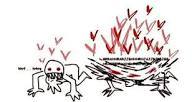
You:
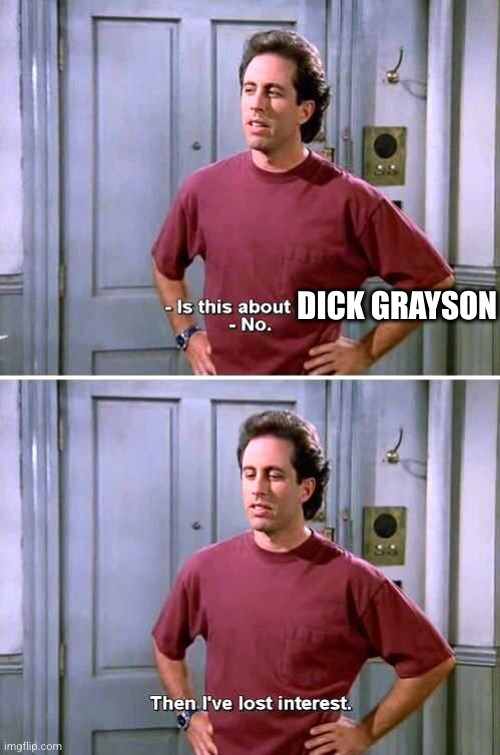
Wait now I feel kinda bad 😭
Dick Grayson is just my guyyyyy. I hunt for scraps of him being mentioned and what the characters think about him and his relationships and his development and—
It’s an amazing run so far! The twists and turns are honestly a religious experience and I’m a huge fan of how Tim spirals and pushes people away after Bruce’s “death” until he resurfaces in Gotham with everyone he cares about helping him bc he is NOT Batman. Kid has friends and it’s so cool to see how many people come together to help him get one over on Ra’s. Also, I shit you not his hit list is 1. Objectively funny and 2. Soooo cool in how one take down perfectly leads to the next. He’s a detective in his own right!!!! His commitment to all bits is hilarious too. Like the fake spinal injury to throw of Vicki is so funny to me. It’s a year long bit.
Not to fucking mention his reintegration into the “bats” where dick (thus far) upholds his initial promise of them being equals by trusting him without needing full explanations and not scolding him like a child when he does something considered wrong. Like fight a ten yr old. Instead dick kinda accepts that’s how Tim and Damian are going to be and compromises his own preferences by saying he (dick) is going to have to learn to live with it. Tim’s trustworthy! He’s respected! His friends and family love him.
Also Stephanie brown is here and she’s a fucking delight as always.
#I love me some analysis so pls share ir ideas if u ever feel up to it!!!#idk if it’s my mindset but when I pick up a comic all my analysis skills fall out of my ears in favor of WOOOOOOOOO TAHTS SO COOL OMG LOOK#ITS DICK GRAYSON#and manga ^#it’s truly unfortunate#get me some classic lit tho and I’ll go off#never be able to shut me up#my favorite position is the one that starts with juxta#I think I’m funny lmao#dc#ask
23 notes
·
View notes
Text
Nada overanalyzing antasma's design (part 1 probably)
ok very random HC and slight detail i noticed about Antasma's final form design in the dream world
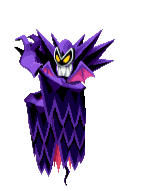

idk if it's just me being deranged as always but i love how his cape/wings seem to have like, those juxta-positionned layers . like how feathers or scales work.
both inside and outside of his wings have a similar pattern in a way except that on the outside part it looks more proper and idk how to say it uhhhhh equal positionning in a way!
so it might be something like, scale-on-leather wings with feather-y inside part????
which is SO interesting too concidering he's in a way closer to being an all-unstoppable-&-powerful deity in a way that's ALMOST opposite to the Zeekeeper design wise.

like see what i mean with how the feathers look properly alligned here too. that along with the color palette contrast of how the Zeekeer has a brighter and more vivid color palette and rounder/softer textures while Antasma has a more sharp and scale-y vibe.
which in a way might be AGAIN connected to the fact that Antasma has this big ego and thinks he's better than everyone and that noone can be a match to him, even if it's the zeekeeper of all people, a god-like deity to the pi'illos.
basically in a way his "full form" is kind of a darker more fucked up counterpart to everything the Zeekeeper is
again this is just me going full of overanalysis mode cuz i love Antasma so much and he has so much going on design and story wise but nintendo doesn't want me to win lol
35 notes
·
View notes
Text
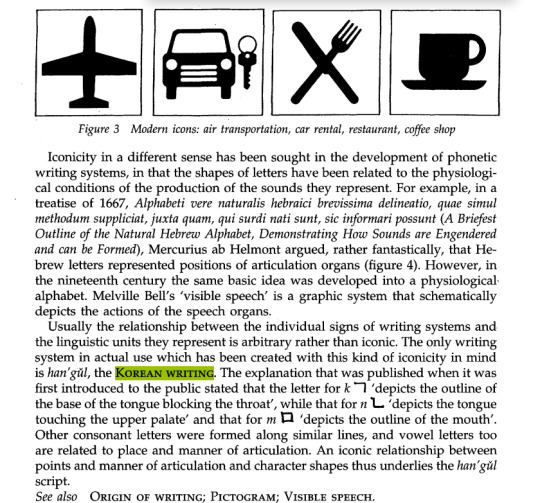
The Blackwell Encyclopedia of Writing Systems, Florian Coulmas
Figure 3. Modern icons: air transportation, car rental, restaurant, coffee shop Iconicity in a different sense has been sought in the development of phonetic writing systems, in that the shapes of letters have been related to the physiological conditions of the production of the sounds they represent. For example, in a treatise of 1667, Alphabeti vere naturalis hebraici brevissima delineatio, quae simul methodum suppliciat, juxta quam, qui surdi nati sunt, sic informari possunt (A Briefest Outline of the Natural Hebrew Alphabet, Demonstrating How Sounds are Engendered and can be Formed), Mercurius ab Helmont argued, rather fantastically, that Hebrew letters represented positions of articulation organs (figure 4). However, in the nineteenth century the same basic idea was developed into a physiological alphabet. Melville Bell's 'visible speech' is a graphic system that schematically depicts the actions of the speech organs. Usually the relationship between the individual signs of writing systems and the linguistic units they represent is arbitrary rather than iconic. The only writing system in actual use which has been created with this kind of iconicity in mind is han'geuI, the Korean writing. The explanation that was published when it was first introduced to the public stated that the letter for k 'depicts the outline of the base of the tongue blocking the throat', while that for n 'depicts the tongue touching the upper palate' and that for m 'depicts the outline of the mouth'. Other consonant letters were formed along similar lines, and vowel letters too are related to place and manner of articulation. An iconic relationship between points and manner of articulation and character shapes thus underlies the han'geul script. See also ORIGIN OF WRITING; PICTOGRAM; VISIBLE SPEECH
8 notes
·
View notes
Text
LitBC - The structure of change
I have finished the novel and what I find most fascinating is how the story changes from part to part.
Young mostly comments on the physical change he sees in himself.
But in the storytelling I can see the indication that there is positive change. I see him slowly breaking down his habitual compartmentalisation:
The first part is selfcontained. It does not mention any of the other important characters and the fact that the two time levels are connected is rooted in a betrayal.
In the second part we get the intercut of two distinct thematically linked episodes where Young is the one trying to make an introduction.
The third part starts with two spheres of Young's life that merge into one narrative when both sides know each other.
Then the fourth part is not just a juxta position but has him explicitly thinking of Gyuho in the Habibi part.
10 notes
·
View notes
Text
"Clearly, you've never heard of a juxtaposition."
Im gonna position this juxta so far up your ass it'll have to be surgically removed
2 notes
·
View notes
Text
Floating Knee: Best Physiotherapy with Expert Care
What is Floating Knee?
A floating knee is a severe injury characterized by a flail knee joint. This occurs due to fractures in both the femur (thigh bone) and tibia (shin bone) on the same leg.
First described by Blake and McBryde, it’s typically caused by high-impact trauma.
Often accompanied by significant soft tissue damage and potential life-threatening injuries to other parts of the body (head, chest, abdomen).
Initial Evaluation
A thorough initial assessment is crucial to determine the full extent of injuries.
This should be followed by a strategic sequence of emergency diagnostic and therapeutic interventions.
For unstable patients or those in critical condition, temporary fracture stabilization using external fixation is recommended.
Common Complications of Floating Knee Injuries
Despite treatment, complication rates remain high.
Common complications include:
Infection
Nonunion (failure of the bones to heal)
Malunion (bones heal in an incorrect position)
Knee stiffness
These complications can lead to functional limitations and unsatisfactory outcomes.
Pathophysiology of Floating Knee
Floating knee injuries can involve various fracture types: diaphyseal (shaft), metaphyseal (end of the bone), and intra-articular (within the joint).
Epiphyseal injuries in children can affect growth plates, potentially leading to limb length discrepancies and angular deformities.
Classification
Adults
Blake and McBryde used the terms true (or type I) injury and variant (or type II) injury to classify the floating-knee fracture pattern, as follows :-
Type I is a pure diaphyseal fracture of the femur and tibia
Type II is a fracture that extends into the knee, hip, or ankle joint.
Fraser et al classified floating knee injuries in a similar way by analyzing knee involvement.
Type I is the same as the true injury Blake and McBryde described, with extra-articular fractures of both bones
Type II is subdivided into three subtypes: type IIa, which involves femoral shaft and tibial plateau fractures; type IIb, which includes fractures of the distal femur and the shaft of the tibia; and type IIc, which indicates fractures of the distal femur and tibial plateau.
In both of these classification systems, type II fractures with intra-articular involvement have been linked with higher complication rates and poorer functional results than those observed with type I injuries.
Children
In children, floating knee injuries are classified according to the Bohn-Durbin or Letts classification systems.
In the Bohn-Durbin classification, floating knee injuries are described as follows:
Type I – Double-shaft pattern of fracture
Type II – Juxta-articular pattern
Type III – Epiphyseal
The Bohn-Durbin system does not account for open fractures and cannot be used to predict complications and prognoses.
Unacceptable findings are femoral union in a position of greater than 30° anterior angulation, 15° valgus angulation, and 5° posterior or varus angulation, or greater than 2 cm of shortening. Tibial malunion is defined as greater than 5° angulation in any plane or greater than 1 cm of shortening.
Rotational malunion is defined as any internal rotational deformity exceeding findings on the unaffected side or greater than 20° external rotation of the extremity, as detected during walking or standing.
Etiology
Road traffic accidents are the most common mechanisms of trauma, followed by gunshot wounds and falls from heights.
Epidemiology
This severe injury appears to be increasing in frequency. A male preponderance is observed, particularly in young adults 20-30 years of age.
Presentation
The ‘floating knee’ is a serious injury.
Floating knee injuries must be included in assessment and treatment protocols for patients with polytrauma.
Patients with an isolated floating knee injury will present with complaints of severe leg pain, inability to bear weight, and potentially some knee instability (due to ligamentous disruption which often accompanies these injuries).
Damage to the vessels (mainly the popliteal and posterior tibial arteries) and lesions of the nerves (eg, peroneal nerve) are common. Vascular injury is common and may be limb threatening if not recognized and addressed. Often, the vascular injury is to the anterior tibial artery and does not result in ischemia and is not treated with vascular repair or reconstruction. However, vascular status needs to be assessed and addressed as appropriate. Traction usually causes neurapraxia, which often resolves, but complete resolution cannot always be anticipated.
The incidence of open fractures is high, approaching 50-70%, at 1 or both fracture sites. The most common combination is a closed femoral fracture with an open tibial fracture.
Simultaneous skeletal disruption of two strong bones of the body almost always occurs following high-velocity impact. The ipsilateral femoral and tibial shaft fractures and knee ligament injury appear to be part of a continuum of combined injuries resulting from complex, high-energy forces. The most common pattern is an open tibia and closed femur fracture.
This injury may be associated with multiple remote organ damage that may range from head injury to foot fractures.
The soft tissue trauma is usually immense and most of the patients are hemodynamically compromised.
A well-documented finding is injury to the knee ligaments that occur in association with ipsilateral femoral and tibial fractures. Anterolateral rotatory instability is the most common pattern of instability. Knee ligament injury is not always suspected, and joint swelling due to hemarthrosis should not be mistaken for a sympathetic effusion.
Diagnosis
Patients with floating knee injuries are typically polytrauma patients. One must monitor for DVT and fat embolus formation that can occur secondary to skeletal trauma. Patients may also have ligamentous injuries (ACL, PCL, meniscal, etc.). These are non-life-threatening injuries and are manageable after stabilization of the critically ill patient and reduction of associated fractures.
Complications
Epiphyseal injury can adversely affect open growth plates, predisposing a child to limb-length discrepancy and angular deformities.
Rates of infection, nonunion, malunion, and stiffness of the knee are relatively high. These complications can lead to functional impairment and frequently cause unsatisfactory results.
Treatment/Management
Treatment and management of the floating knee injury and each fracture is dependent upon multiple variables and factors. It depends on whether the fracture is open or closed, the type of fracture pattern, the location of the fracture, comminution of fracture, as well as skeletal maturity. Skeletally immature patients are more likely to be treated non-operatively with a long leg cast than skeletally mature patients with minimally displaced fractures.Pediatric floating knee,’ classified as isolated physeal fractures of the distal femur and proximal tibia may be treated operatively by fixation with K-wires followed by casting for six weeks.
Other, more complicated fractures may require more invasive procedures.Femur fractures are typically treated surgically using one of three options. These are intramedullary nailing (IMN), compression plate screws, or dynamic condylar screws (DCS). IMN is typically the choice for diaphyseal fractures where a functional reduction is more indicated. This approach allows for stability of the fracture while still allowing for callus formation that occurs with secondary bone healing. Compression plate screws may are useful for femoral shaft fractures that require a more anatomic reduction and primary bone healing; this would occur in areas where concern for joint mobility post-operatively exists. Dynamic condylar screws were the choice in intra-articular fractures where an anatomic reduction is a must for maintaining joint mobilization.
Tibial fractures are also treated based on the above variables. External fixation is the most common option with open tibial fractures. Plate screws or locked intramedullary nails are a possible choice for most other tibial fractures. The tibia typically only requires a functional reduction unless the fracture is intra-articular (the tibial plateau). Intramedullary nailing of both bones, when possible, is the best surgical management associated with good outcomes.
check out
0 notes
Text
I have used this lampshade and A4 printed paper with PVA glue to make this part of my work. I painted the pome of the Blackmans Burdon by Hubert Howson in a magnolia colour to give it the appearance of a sepia tonal colour to reflect its age ,This idea came from an old news paper that had taken on the colour due to the aging process. I am being considerate to the reaction of the ink in the printed on paper, I have done a few test samples using glue to ensure the ink wont bleed when wet. I applied the glue sparingly to avoid ink bleeds. The Rudyard Kipling poem Whiteman's Burdon I painted white. Which gives the symbolic reference of purity and godliness which the author presumes in his work.

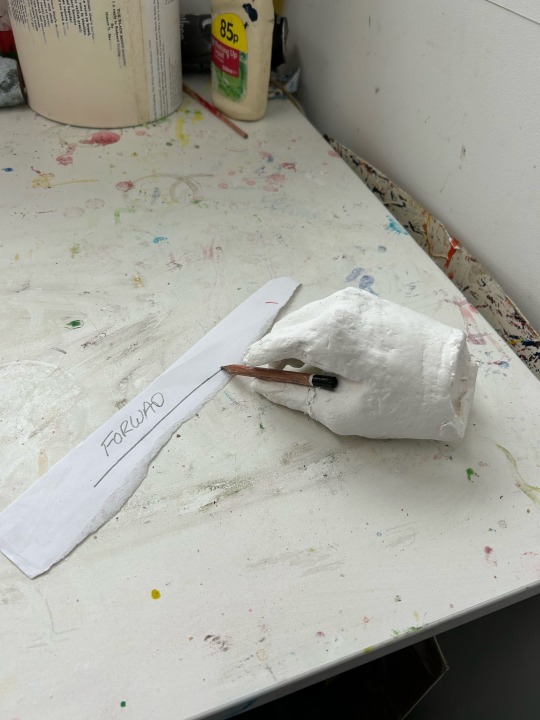
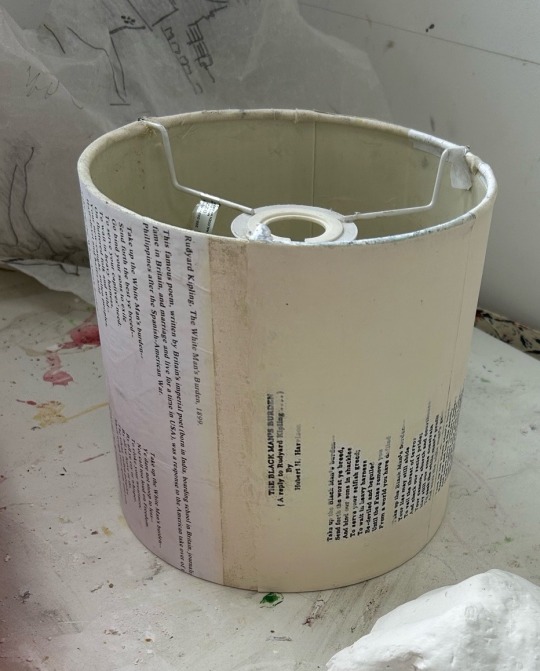
The mould of my hand is made using alginate. I chose a narrow container to save on material during this part of the process it worked out well it was a fairly straight forward part of the process.
The plaster cast pouring had limited success. I do not think I had the mixing ratios correct when making the plaster. I was impatient, concerned the plaster was too thin. I added plaster liberally. I did not follow the process I had learned in college properly. The plaster set too quickly. It was too thick to pour into the mould. More of a doughy consistency than a poured liquid I pushed hardening plaster into the mould packing it in with my fingers.
I found it difficult to work out the volume of my hand in the container this made it difficult to work out how much plaster to use in the first place. this didn't help ! More consideration to volume of material and timing in the process should be considered in future. i should have disposed of the plaster and started again.
I was aware before making the hand cast that flaws may occur in the plaster. I thought this would lend to the narrative of the authors flawed thinking. With a juxta position from the assume purity of the whiteness of the author. The hand has turned out more flawed than expected, which i quite like. It adds to the narrative of flawed thinking in the author effectively.
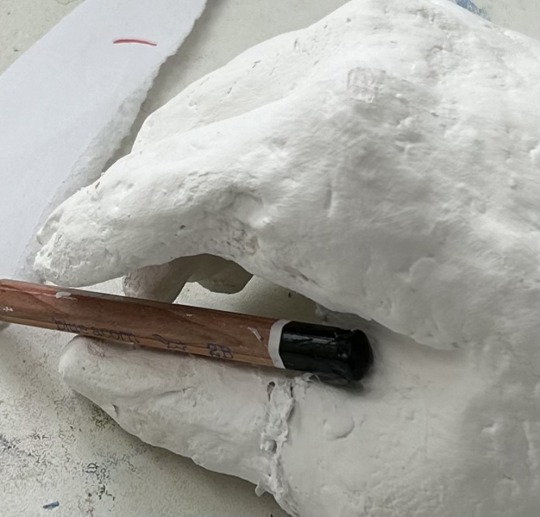
.
0 notes
Text
Concept ideas for the final project
I wanted to do a 2D animation for my final project because it's what I eventually want to do for work. I decided on 3 possible topics for this animation. Depression - The Comedy: I picked this topic because I liked the idea of juxta positioning the two concepts of depression and a comedy. Also from personal experience and the research I've done people with depression generally do not present themselves in sad mopey ways. Many people decide to hide this behind jokes and laughter and a smile.
UNTITLED - Epic Fight Scene: I thought a fun exercise of anatomy and movement would be to animate a fight scene between two characters. Featuring vivid movements and supernatural abilities. However I felt like this concept was lacking story wise though visually it had a large potential. Monotony - A day in my life: This was the topic that I felt resonated the most with me personally. This would follow the days in the life of a barista in a coffee shop as he goes about his days. Running the place and carrying out tasks, encountering many of the same situations every day. However the eventual monotony of every day life being so mind-numbingly similar gets to the character and they slowly start spiraling
0 notes
Text
Time
Buy me a coffee?
A/N: I had two options relating to this title: Onerous Cimmerian or force my brain to give me a JJ ‘Time Is Broken’ idea. I went with OC. It’ll be short, because my eyes are very sleepy.
A year did things to people.
A year dragged the whole family into this hellscape.
A year broke up families.
Juxta looked at the lions as they played with each other, wondering if they knew the extent to which their existence reached.
They seemed so happy.
In his hand, he held an old family photo, image faded behind the sun-beaten glass of the photo frame.
He looked down at the photo again, small smile beginning to tug at his lips as a memory began to surface.
The image showed all of the men when they were younger.
Juxta and Malvern stood side-by-side, both with natural black hair, Juxta without a scar on his face.
Chase and Jared pulled faces at each other, a blonde child sticking his tongue out at a brown-haired boy.
Hen and Alto stood to the side, Hen with a water gun pointed at the Brodsens and Alto watching some birds in the tree out of frame.
They all looked happy, innocent.
Juxta lowered the photo, staring at the wall leading to the void.
He blinked, feeling tears begin to fall down his cheeks.
When had things gone so wrong?
“Well, I never expected tears,” Death’s voice caused Juxta to hastily wipe his eyes, setting the photo aside.
What do you want?
Death smirked, picking up the photo to inspect it.
“I just wanted to see you, dear Juxta.”
The silent man glared at Death, refusing to move.
Chase and Jared have been away from the house for several months. Mayhem can’t happen if they’re not here.
Death put the photo down, placing a finger dramatically to her chin in thought.
“Yes, you’re quite right. But then, whatever shall we do?” She began to smile, making chills run down Juxta’s spine.
Death snapped her fingers, disappearing and leaving Juxta alone in his room with his lions.
He looked around, trying to see if anything had changed, but he couldn’t see any differences.
Confused, he stood up to head to the kitchen, but found that he couldn’t get up.
He looked frantically around, fear filling his stomach as he fought to breathe.
He pushed his arms on the bed, trying to launch himself up.
He landed on the ground, startling the lions and causing them to back away.
He feebly reached for the doorframe, before dropping his hand back down.
As the world around him faded to black, He managed to send a message to his brother.
Help me Malvern…
5 notes
·
View notes
Text
Swap Men
Same site as before, different view. More swap Boys!






You may recognise them from first glance, but if you need to be recapped, Which you really shouldn’t, Juxta, Malvern, Jared, Chase, Henrik and Alto.
This is really fun to do, and if I find any more, I swear I’ll put them up here.
Now go have fun with the others before I take one away from you.
#jacksepticeye#juxta position#malvern#jared the magick#henrik von schnapple#chase brodsen#alto septicie
11 notes
·
View notes
Text
He made a deal with Death so he wouldn’t die but now everyone around him treats him like a victim
You can only say one thing about your (current favourite) OC to get someone else interested, what is it?
561 notes
·
View notes
Text
DAY 5438
Jalsa, Mumbai Jan 4/5, 2023 Wed/Thu 12:18 AM
🪔 , January 5 .. birthday of Ef Akhil Swami .. January 4 .. birthday of Ef Manoj Vaid from New Delhi .. Greetings .. 🌿
wishes from the entire Ef family , may all be in care and wellness .. 🙏❤️
Lethargic countenance in waiting for the cues to move so the ticket window can be addressed ostensively to meet the anomaly of work ..
Absence of routine is building many bridges across rivers seen and unseen, in our countenance and this has been the cause of staying put in one realm of inertia doggedly dodging schedules that have been programmed before the beginning of the non routined work ..
There are no compressed timings to be met .. there are no mailed schedules to be met .. there is no one asking when where and how .. all the asking is being done by the self ..
Self is a golden word .. in times to come .. self driven, self written, self composed .. and selfie !
Humanity has finally decided it has worked beyond its limits and the need is to departmentalise its work force to the developed technology and the inventions of scientists , who have worked their way through the years of research and thesis , to arrive at the driven formulae , invented , yet in a mode to be executed with some degree of success ..
I was glued and fixed it to the position of least resistance .. it never did resist .. welcomed the change and resolved its situation, without further ado ..
Mundane though it may seem , the experience of idleness is and has been a fresh invent for the systematic destruction of the ‘ country of the system juxta- positioned in the haemoglobin of the atmosphere , much like the sophisticated rhetorician intoxicated by the exuberance of its own capitulated verbosity ‘ ...
So .. the context of the day having ended, it was leading in to the slumberous recline of the matroska .. err .. the bedded mattress .. cushioned of course within the bulbous softness of what has been often described as the ‘takiya’ , the ‘sirhana’ .. the pill of the pillow ..
but but but .. the attraction of the written word for the Ef that wait patiently for a connect and a read compelling to the extent of seeking that App., introduced to me by dear friend conversant in the technology of the times .. which when asked for shall produce on its own within seconds the worded script ..
I did experiment it when it was loaded in the region of its introduce .. but here it has failed .. and that is a frustration indeed .. so one does not give up and goes back to the beginning .. to learn again and practice often to get it right ..
hmmm .. provoking life lessons !
No no no .. no lessons here .. delete it .. do what you feel is right ..
try yes .. but to regret after NO try .. bigger regret .. !
hehehhaha .. just made that up .. !

the multiple lines of face .. face that speaks all .. filled with complicated lines .. the obvious truths of living .. wipe them out with guile and hard work .. give in to them and they shall be even more complicated ..
sorry .. giving unnecessary ‘gyan’ , when not needed at all ..
going to try the ‘sirhaana’ ..
and cantering into it .. or cantering into the next day ..
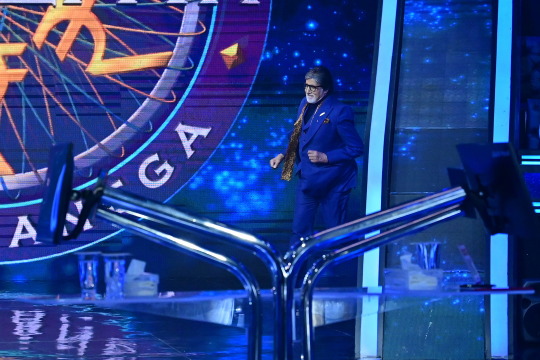
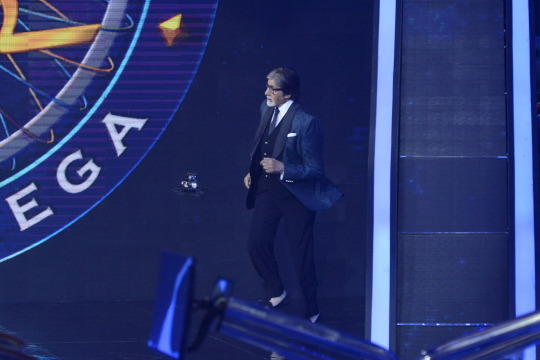


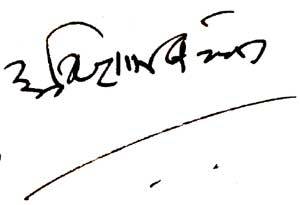
Amitabh Bachchan
133 notes
·
View notes
Text
god i love combining ‘girly’ clothes with masc ones. juxta 🤌 position 🤌
#wearing khaki cargo pants with a lilac and white velour blouse#and i love it#i’ll probably team it with my tired vans and loose hair#rose.txt
11 notes
·
View notes
Text
It will never not be funny to me that the first person Terence “has lived with a hermit his whole life and the worst swear word he knows is ‘cor,’” becomes friends with is Sir “cannon the worst potty mouth in Squire’s tales except for maybe Kai” Gawain. Maybe it’s just the juxta position, but I think it’s absolutely hilarious, especially because Terence never uses those words himself except in very dire situations where he is literally described as using Gawain’s vocabulary. Idk why I love it so much, I just think it’s cute and fun.
4 notes
·
View notes
Text
Experiments in Writing: A Critique of Creative Work Within Queering, Feminism, and the Work of Sigmund Freud
For my creative work that I undertook in this module, I chose to focus on the idea of Queering. As well as this, I found myself influenced by the theories and works of Sigmund Freud[1], as well as using several feminist texts, both literary and theoretical, to try and establish a connection between the three ideas within my writing. Due to the essay Freud wrote on The Uncanny[2], he theories and ideas are already heavily tied to gothic literature as a whole, which made connecting him to my work a lot easier. I focused on short stories based upon fairy tales and attempted to alter the narrative of each of the original texts to suit the concept I had come up with. Based upon some of the work from lessons, I used a form of metalepsis[3]within my stories, trying to shift the perception of gender and sexuality within a gothic literate format. I was inspired to take this route by one of my favourite authors, a feminist writer called Angela Carter[4]. Her work in The Bloody Chambers and Other Stories[5] was a major source of inspiration for my work and helped me to develop my writing format and style throughout this module. I chose to focus my work on these theories as I felt that they were somewhat contradictory of one another, and I felt that the juxtaposition of these ideas would help to elevate my writing towards something outside of the usual style I worked in.
For my first creative piece, a short story titled The Wolves in the Woods, I wanted to focus mostly on several of Freud’s most infamous theories. The creative work itself was heavily inspired by a short story written by Angela Carter called The Company of Wolves[6]. I had read this story during college and found the way she addressed gender play and sexuality a fascinating plot device. Not only this, but the way that she would take fairytales that were commonly known amongst readers and adjusted the story to appeal to a wider feminist reading. I agree that a lot of fairytales have subtle sexist undertones that usually place women and men in specific boxes, and I enjoyed reading Carter’s reimagining of this.
Because of the theories I had been researching for the module, I found that writing influences like Carter were juxta-positioned with theories like Freud. One of the main theories I hoped to translate into creative work was the three agents of Freud’s idea of the psyche, often referred to as the ‘id, ego, and super-ego’[7]. As Freud explains, the id ‘contains everything that is inherited, that is present at birth, is laid down in the constitution — above all, therefore, the instincts, which originate from the somatic organization, and which find a first psychical expression here (in the id) in forms unknown to us’[8]. The ego and super-ego, on the other hand, represented the more intelligent side of humans, made of ideas like common sense and cultural norms and opinions taught to children by their parents and the society they live in. This concept of basic instinct versus the laws of society was something I could instantly connect to the gothic literature of Carter, as well as feminism and Queering due to their association with being historically against society’s idea of normal.
When I began to plot out my creative work, I realised that the entire concept of a werewolf was a literary device for man’s inner turmoil between instinct and reason, aka the id and the ego/super-ego. I attempted to flout the tropes of romance writing by presenting a werewolf who, unlike many other fictional interpretations, does not ignore the basic animalist instincts for his love interest. Rather, they compromise, accepting equal shares of idand ego, whilst completely casting aside the rules society sets, therefore ignoring the concept of the super-ego. By casting aside the rules that are hinted at through the story, the protagonist is freed, as shown by the ending of the story being ‘amongst the howls beseeching the night, was a woman’s cries of joy entering the chorus’[9].
Throughout the beginning of the story, the structure of the super-ego is important to the world-building of the setting. Another of Freud’s theories that I used for my first creative piece was the Madonna-Whore complex, which suggests that women either fit the role of the pure virginal wife, or the corrupted succubus. The implication of the theory is that women can only be one or the other, with the Madonna being the ‘preferred’ female archetype. In The Wolves in the Woods I allowed my protagonist to undergo a narrative transformation using the Queering literary device metalepsis. Judith Butler’s point on metalepsis helped to carve the character development in my work through her statement that ‘the performativity of gender revolves around this metalepsis… performativity is not a singular act, but a repetition, a ritual’[10]. Through my first creative piece, I tried to show a progression from a Madonna-like character to someone who embodies the whore, which is summed up by the end of my story in a paragraph ‘She is not the trodden women of the village, with their heads wrapped in silk, hidden from men and from the world. Now she sits upon the lap of the wolf, who stares at her with pupils blown wide, ears open and perked’ [11]and separates her from the other women, transforming her in just two sentences and completing the metalepsis.
However, this is not the only instance of metalepsis in this story. Whilst this is more of a metaphorical sense of metalepsis, the actual idea of a werewolf is a physical form of this literary device. This was another way of connecting the two characters. They both undergo some form of transformation and simultaneously must learn to adapt due to their place in the world. To make this clearer, I used repetition in the way they were described to further suggest the idea that their roles in society were different. These sentences, ‘Lycanthrope: the ability to shift, to transform, to adapt’ and ‘Woman: the ability to shift, to transform, to adapt’ were written this way because they also implied that both Lycanthrope and Woman were ‘things’ rather than people.
A major point to the majority of my stories was taking traditional gender roles within fairy tales and adjusting the narrative around them, which is one of the entire concepts behind the literary device of metalepsis. I did research on masculinity within fairy tales[12]- and gothic literature in general- and found a few feminist articles that discussed how these male characters were influenced by the masculine ideals of the time, and how it affects the narrative of the novels they appear in as a whole[13]. An essay by Alice Neikirk found evidence that ‘Rather than being a mere reflection of societal ideals, these fairytales perpetuate Christian, patriarchal concepts as a means of maintaining the gender hierarchy’[14]. I find that exploring fairytales through Freudian concepts was easy, as a lot of Freud’s theories focused on societal expectations and the way they can shape the human psyche. To an extent, fairytales, including my own, are a prose form of rules and morals set by the society who shares them, usually used as a form of control over children, mainly young girls.
Therefore, when applying psychoanalytical theories to my work, I attempted to subvert some of the typical rules set in fairytales by changing the roles of characters. An example of this is my final story, Eilidh’s Prince, which featured a lesbian romance whereupon one of the characters assumes the role of a man for a brief period. I felt that this was the best choice for the plot because of the symbolism of castration anxiety that is prevalent throughout the story. This is something I made clear when I chose to write the line ‘A fanged rose, a vertical grimace they cower from, lest it bite back’[15]. The idea of castration anxiety[16] is another of Freud’s theories, something he viewed as part of the uncanny. The idea is that men fear castration, perhaps as a punishment for their lust or simply the idea of becoming women, but I attempted to transform this idea by having a woman become a man temporarily, knowing the ‘fanged rose’ was not something she had to fear. I wanted to create a sense of dramatic irony that also came from Carter’s work. One story in particular that inspired me for this was ‘The Erl-King’ where the title character is described as ‘an excellent housewife’[17]. Through this, Carter has transgressed the usual boundaries of gender, and attributes feminine qualities to her male character. I took my version a little more literally and allowed my love interest to dress as a male.
For the other story in my collection, The Fae Prince and The Pomegranate[18], I also had used The Erl-King[19]as my main inspiration. However, unlike my two other pieces, this one was also partially inspired by historical mythology, which is another passion of mine. The mythology I chose to use for my work was the story of Hades, God of the Underworld, and Persephone[20]. Greek Mythology lends itself to fairytales as they could technically be considered a tale of their own time. Not only this, but I find that the nature of the Celtic myth of Fae is similar to the rules of the Underworld according to Greek accounts of Hades and Persephone. The main rule that comes to mind between both is that eating in their respective territories, according to legends, will force the victim to remain there forever. However in doing my research I found that certain myths suggest that Persephone had in face willingly gone to the Underworld, hence her name changing from Kore (meaning ‘the maiden’) to Persephone, which means ‘the bringer of death’[21]. The use of the pomegranate as a way of tying the Prince to the mortal girl and by extension her world was my way of applying both Fae rules and still using the mythology that I had used to construct the story’s foundations.
In conclusion, I enjoyed using these theories and influences to create my stories. I found that the use of experimental ideas and writing gave me more freedom than the usual styles I had been writing in. Comparing feminism and queering with the likes of Freud proved to be quite a challenge, but I feel that it paid off, as I have been able to create an unusual set of stories heavily inspired by authors’ works that I have long looked up to as gothic fantasy literature with heavy symbolism and use of metaphors and euphemisms that made the stories more interesting.
[1] Martin Evan Jay, "Sigmund Freud | Biography, Theories, Works, & Facts", Encyclopedia Britannica <https://www.britannica.com/biography/Sigmund-Freud> [Accessed 18 April 2021]. [2] Sigmund Freud, The Uncanny (London: Penguin Books, 1919). [3] "Metalepsis - Definition And Examples Of Metalepsis", Literary Devices <https://literarydevices.net/metalepsis/> [Accessed 18 April 2021]. [4] "Angela Carter", Angelacarter.Co.Uk, 2014 <https://www.angelacarter.co.uk/> [Accessed 18 April 2021]. [5] Angela Carter, The Bloody Chamber And Other Stories (London: Victor Gollancz Ltd, 1979). [6] Angela Carter, The Bloody Chamber And Other Stories (London: Victor Gollancz Ltd, 1979). [7] Saul Mcleod, "Id, Ego, And Superego | Simply Psychology", Simplypsychology.Org, 2019 <https://www.simplypsychology.org/psyche.html#:~:text=According%20to%20Freud%20psychoanalytic%20theory,id%20and%20the%20super%2Dego.> [Accessed 18 April 2021]. [8] Sigmund Freud, "An Outline Of Psycho-Analysis", 1940. [9]Shannon Hutton, Experiments CW1 [10] Judith Butler, Performative Acts And Gender Constitution: An Essay In Phenomenology And Feminist Theory (Baltimore: John Hopkins University Press, 1988) <https://www.jstor.org/stable/pdf/3207893.pdf> [Accessed 19 April 2021]. [11]Shannon Hutton, Experiments CW1 [12] Alice Neikirk, "...Happily Ever After (Or What Fairytales Teach Girls About Being Women)", Hilo.Hawaii.Edu <https://hilo.hawaii.edu/campuscenter/hohonu/volumes/documents/Vol07x07HappilyEverAfter.pdf> [Accessed 18 April 2021]. [13] "Masculinity In Victorian Gothic Novels", Ukessays.Com, 2017 <https://www.ukessays.com/essays/english-literature/masculinity-in-victorian-gothic-novels-english-literature-essay.php> [Accessed 18 April 2021]. [14] Alice Neikirk, "...Happily Ever After (Or What Fairytales Teach Girls About Being Women)", Hilo.Hawaii.Edu <https://hilo.hawaii.edu/campuscenter/hohonu/volumes/documents/Vol07x07HappilyEverAfter.pdf> [Accessed 18 April 2021]. [15]Shannon Hutton, Experiments CW1 [16] Sigmund Freud, "Freud: On Narcissism", English.Hawaii.Edu <http://www.english.hawaii.edu/criticalink/narc/guide5.html> [Accessed 19 April 2021]. [17] Angela Carter, The Bloody Chamber And Other Stories (London: Victor Gollancz Ltd, 1979). [18]Shannon Hutton, Experiments CW1 [19] Angela Carter, The Bloody Chamber And Other Stories (London: Victor Gollancz Ltd, 1979). [20] "Myth Of Hades And Persephone", Greek Myths & Greek Mythology <https://www.greekmyths-greekmythology.com/myth-of-hades-and-persephone/> [Accessed 18 April 2021]. [21] "Persephone: Goddess Of Spring And The Underworld", THEOI GREEK MYTHOLOGY <https://www.theoi.com/Khthonios/Persephone.html> [Accessed 20 April 2021].
#gothic literature#literature essay#literature#writing#writers#fiction#experimental writing#gothic writing#feminism#queering#sigmund freud#freud#psychoanalysis#writing community#academic writing#writer#write#creative writing#academic essay#academics#dark academia
16 notes
·
View notes